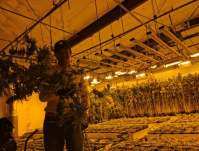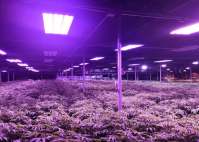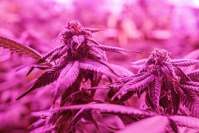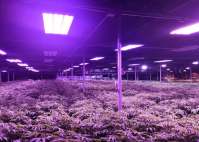Light is the main factor for plant growth and development. Photosynthesis is the main source of inorganic-organic transformation of materials on the earth. The wavelength in the range of 300mm to 800mm can be absorbed by green plant chlorophyll or photoreceptors. In the 1970s, people actually began to study the growth of general plants under artificial light. The research stopped because of difficult problems. It is generally believed that plants can only complete their life history under the sun.
Until the invention of the red LED provided a reference for the research of plant light quality. Then the discovery of blue light promoted the research of light quality required by plants. The importance of different light qualities in the photosynthetically active radiation spectrum to plant photosynthesis and morphogenesis is not equal. Among them, red light and blue light are the most important to plant photosynthesis. It is determined that artificial light supplementing light plants with red light and blue light as the spectrum are provided The beginning of the experiment.
It was not until later that LED red and blue combined light could replace fluorescent lamps and other research results for plant supplement light, which laid the foundation for the artificial light source LED grow light with LED red and blue quality as the core. In the following experiments, wheat can complete its life cycle under the red and blue light sources of LED grow lights, and the biomass and seed yield are improved compared with the effect of fluorescent light irradiation. Some people used Arabidopsis as the test material and obtained the same results. LED grow lights Red and blue light can be used for artificial light plant cultivation.
The use of red and blue LED grow lights to replace sunlight and its traditional plant lights for artificial plant planting, so that plant planting can break the constraints of the environment, region and season. This allows more plant factories and greenhouses. With the emergence of plant research bases, research has found that in addition to the obvious effects of LED red and blue light on plants, there are also some beneficial lights that also have an effect on plants, which need to be combined with red and blue lights to supplement light for plants.
For facility crops, light quality requirements and distribution characteristics have temporal and spatial differences, as well as plant species and varieties. The essential requirements of light quality for plant growth and development are staged. In the germination stage (usually spring), IR and heat are needed; in the vegetative growth stage (summer), more blue light is needed, focusing on the formation of light morphology; and more are needed in autumn. Red light promotes photosynthesis and the accumulation, storage and utilization of carbohydrates. The spectrum of LED grow lights can meet these needs.
During photosynthesis of plants, radiant energy is distributed according to wavelength or frequency. "Light quality" is often used to indicate the characteristics of the radiation spectrum. Light radiation response (plants) refers to the response of plants to incident radiation, which can be divided into photosynthetic response and light morphological response. Photosynthetic response refers to the response to incident radiation determined by the vegetative growth and productivity of the plant. Photosynthetic response refers to the response to incident radiation determined by the vegetative growth and productivity of the plant. Light morphological response refers to the response of plants and morphology to incident radiation, which is controlled by phytochrome and its light-fixed state, including plant germination, pigment synthesis and morphological development. Photosynthetically active radiation (PAR) refers to the radiant energy in the specific wavelength range that is absorbed by the plant and used for photosynthesis.
There are two ways to improve the efficiency of plant growth and supplement light with LED grow lights. The first is to determine the spectral response curve of the plant species and species, the red and blue demand ratio, and the total amount of light required and the photoperiod, and then customize the LED grow light spectrum, and then adjust it according to plant growth. The second is to provide an LED grow light lighting system in accordance with the needs of the plant light environment. Light is used as a nutrient in the process of plant growth to ensure the healthy growth of plants.






